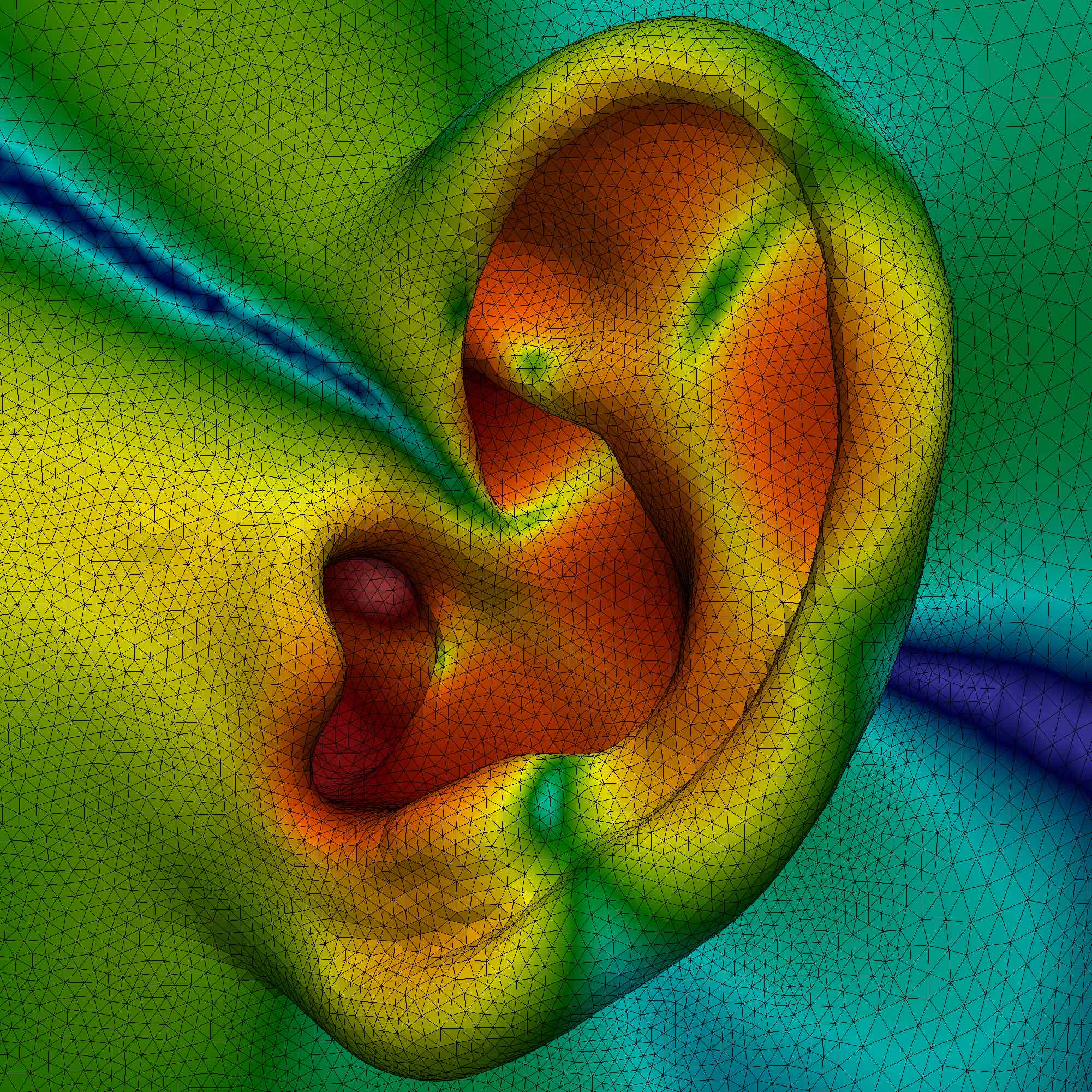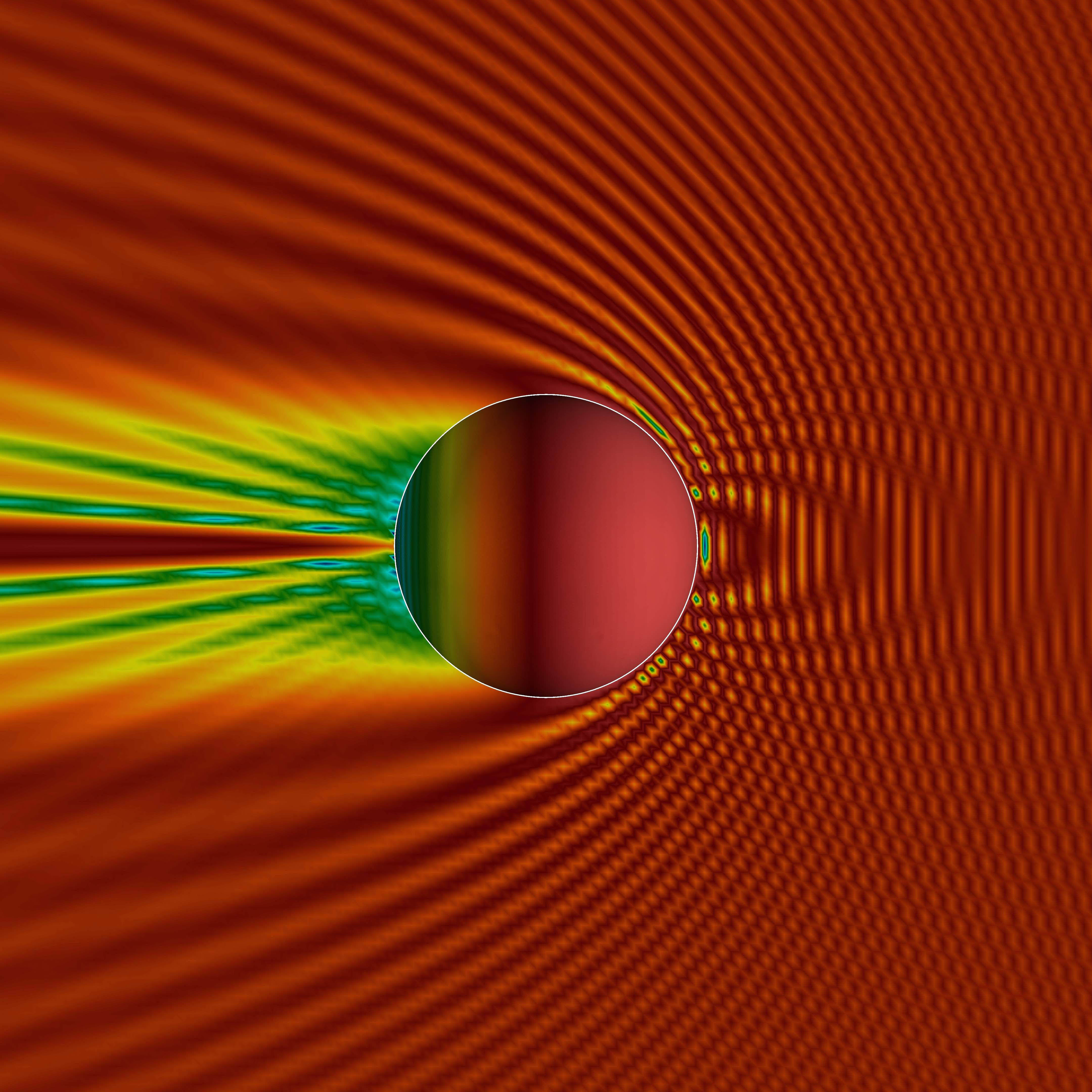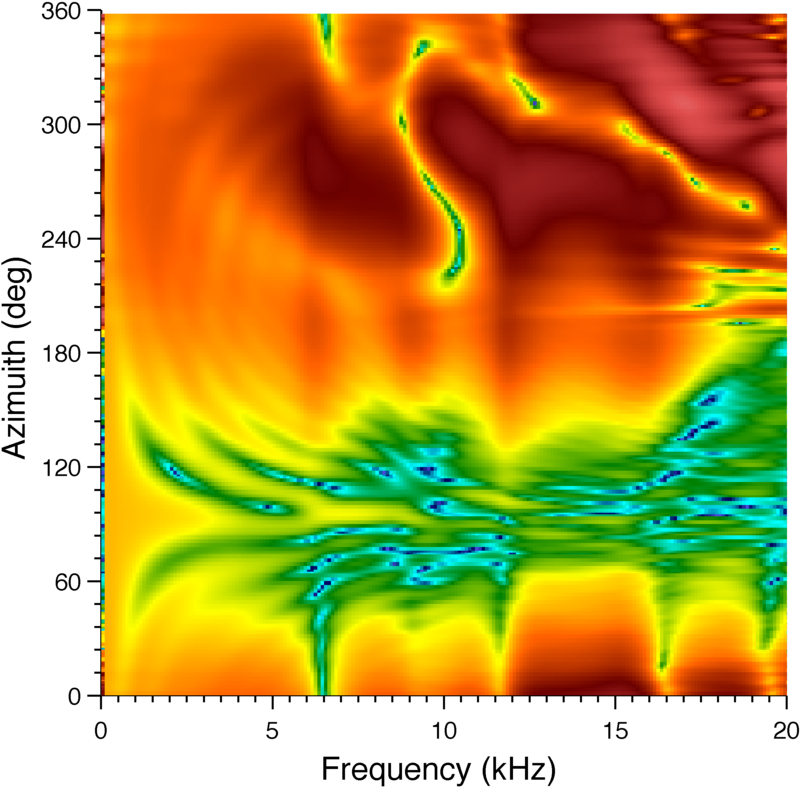
Read 3D objects
in all common file formats
Mesh2HRTF input files can be directly exported from Blender. Thus, Mesh2HRTF supports all common mesh file formats, e.g., PLY, OBJ, and STL, can be used for the numerical calculation of HRTFs.
Numerical calculation of the head-related tranfer functions by the use of the Burton-Miller collocation boundary-element method coupled with the multi-level fast multipole method.
Head-related transfer functions (HRTFs) describe the listener-specific directional filtering of the incoming sound at the entrance of the ear-canal. HRTFs are caused by a scattering process, thus, they can be numerically calculated by simulating the sound-field scattered by the human head and ear. Various simulation methods for the numerical calculation of HRTFs were investigated, with a particular research effort focused on the boundary-element method (BEM). In most of these studies, researchers either had to use commercial software or to implement the BEM by themselves.
In 2012, to simplify the process of HRTF calculation, development of Mesh2HRTF was initiated at the Acoustics Research Institute of the Austrian Academy of Sciences and programmed by Harald Ziegelwanger using the numerical core basis from Wolfgang Kreuzer under the lead of Piotr Majdak.
Nowadays, Mesh2HRTF is a collaborative work of the Acoustics Research Institute of the Austrian Academy of Sciences (Austria) and the Audio Communication Group of the Technical University of Berlin (Germany).
Mesh2HRTF is an open-source project providing an easy-to-use software package targeting researchers in the field of binaural audio. Mesh2HRTF reads geometrical data, calculates the corresponding sound field, and outputs HRTFs as a SOFA file. To support multiple computer platforms, the concept of Mesh2HRTF focuses on a command-line numerical core called NumCalc implementing the 3D Burton-Miller collocation BEM coupled with the multi-level fast multipole method (ML-FMM). Other parts of Mesh2HRT provide add-ons for Blender for geometry preprocessing and tools for Python and Matlab for post-processing and visualization purposes.
Mesh2HRTF 0.x was initially released in 2015 under the GPL3 license. It was used for the numerical calculation of HRTFs in many studies. The current version of Mesh2HRTF, Mesh2HRTF 1.x was released in February 2023 and is available under the EUPL v1.2-or-later. See the License section when using Mesh2HRTF.

Mesh2HRTF input files can be directly exported from Blender. Thus, Mesh2HRTF supports all common mesh file formats, e.g., PLY, OBJ, and STL, can be used for the numerical calculation of HRTFs.
By coupling the BEM with the multi-level fast multipole method, Mesh2HRTF is able to simulate the sound field and to calculate HRTFs for the whole audible frequency-range, i.e., for head and pinnae meshes with more than 100 000 triangular elements.


Mesh2HRTF supports three types of sound sources. First, an arbitrary number of point sources can be simulated. Second, an arbitrary number of plane waves can be simulated. Third, active vibrating mesh elements can be simulated in Mesh2HRTF by applying velocity boundary conditions.
Mesh2HRTF saves HRTFs and HRIRs as SOFA files. SOFA is the official standard AES69 of the Audio Engineering Society for storing HRTFs.

Mesh2HRTF 1.x is licensed under the European Union Public Licence (EUPL), version 1.2 or later.
If you use Mesh2HRTF 1.x in your code, provide credits:
If you use Mesh2HRTF 1.x in your research, cite the following articles:
If you refer to specifics of NumCalc, cite the following article:
Mesh2HRTF versions 0.x are licensed under the GPL3.
If you use Mesh2HRTF 0.x in your code, provide credits: "Mesh2HRTF 0.x, H. Ziegelwanger, ARI, OEAW (mesh2hrtf.org)"
The reference to Mesh2HRTF 1.x:
The reference to NumCalc:
Mesh2HRTF was presented for the first time at the 22nd ICSV in Florence:
Since then, Mesh2HRTF was used in many publications:
If you want to ask for a feature or found a bug in Mesh2HRTF, please check out the issues and put it in there. This contains a list of all current issues with Mesh2HRTF and all feature requests for the future.